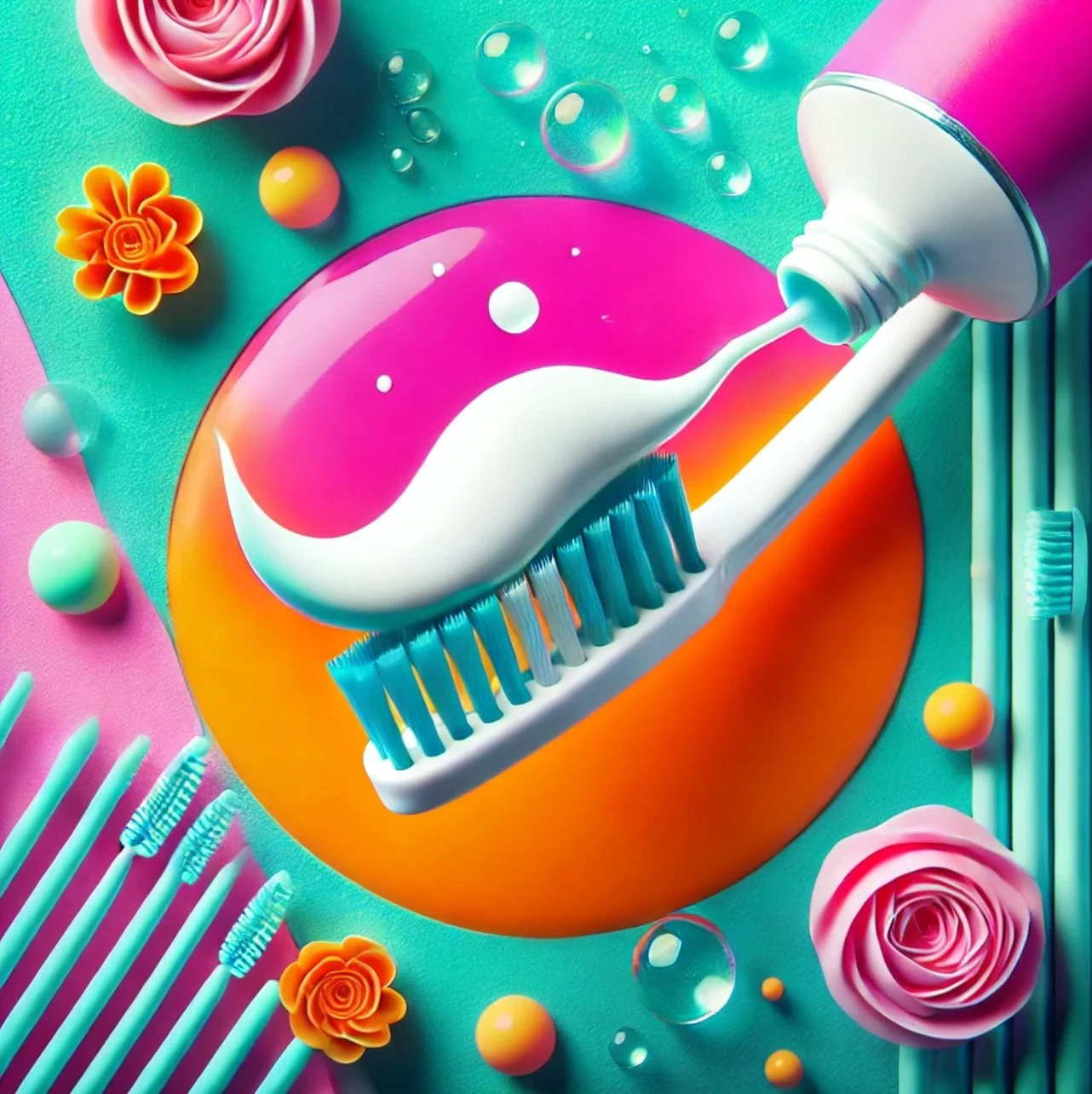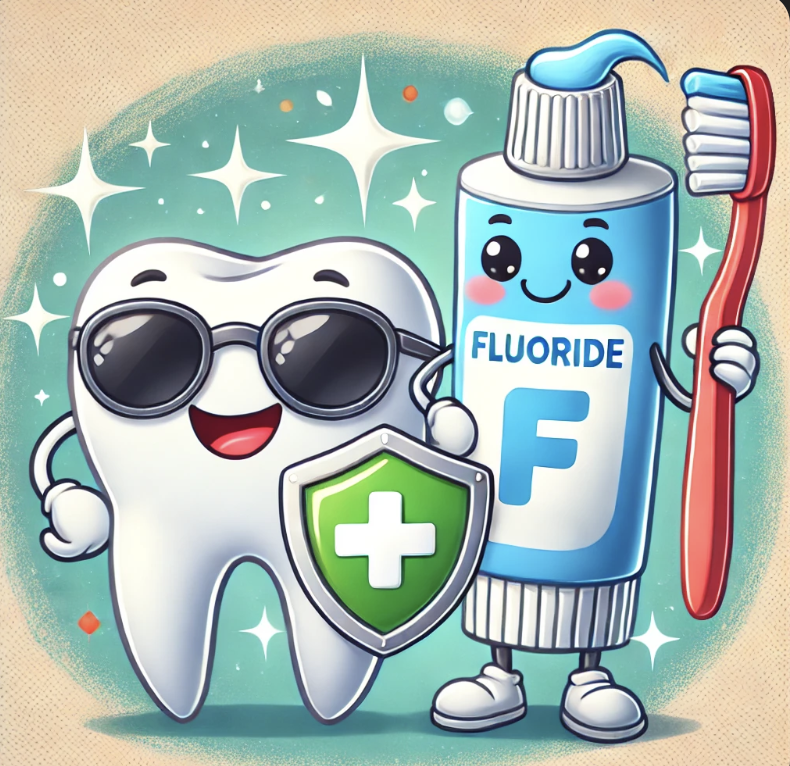Fluoride and Your Family's Health: A Father’s Reflections
I’m a dentist, and my kids don’t use fluoride toothpaste.
Is that because I think fluoride is ineffective? No! In fact, it is perhaps the easiest, most cost effective prevention strategy for tooth decay.
So why don’t my kids use it? The answer is not as black and white as many assume. There is a lot of science to support fluoride use. But there’s also a strong rationale against. Below are some thoughts for and against fluoride, and how I as a dentist and father recommend you think about it for your family. I’ve also listed questions you should ask yourself to decide whether fluoride application is best for your family!
*note: I am not trying to choose any political side here. I am intentionally not commenting on matters of public policy. This is about YOU and thinking through what’s best for YOUR FAMILY.*
In support of fluoride:
Fluoride is a great way to strengthen teeth and prevent tooth decay. Numerous studies show this. But, as with any health topic, there's more to consider. Let’s explore the health implications of fluoride use both topically (through toothpaste or treatments applied to teeth) and systemically (through drinking water or supplements) so you can make an informed choice about what’s best for your family’s dental care.
Benefits of Topical Fluoride
Topical just means something that is set on the teeth. This is found in toothpastes, mouth rinses, and professional treatments. It directly strengthens the outer enamel of teeth, and as Dr Andrew Huberman and I have said, can even reverse early stages of decay. One particular study showed fluoride in toothpaste can reduce cavities by 26% (1).
The CDC says tooth decay is the most common disease of childhood in the US, so fluoride as a cavity reduction strategy is a huge deal! The CDC advises that when children brush daily with a fluoride toothpaste or get topical application at their dental hygiene visits, they’re getting a powerful shield against cavities (2).
Benefits of Ingested Fluoride (Fluoridated tap water)
When fluoride is ingested, through drinking water or supplements, it enters the bloodstream and becomes part of the developing teeth under the gums. This process can make teeth more resistant to decay even before they appear. This is particularly helpful in remote areas where fluoride sources or professional dental care may be more limited (3). Teeth aside, there aren’t other known benefits to ingesting fluoride.
Fluoride Saves Money
Research highlights that for every dollar spent on fluoride in drinking water, families save on future dental care costs due to reduced need for treatments (4). Actually, this exact same argument shows that getting regular dental cleanings saves money on healthcare costs. For families needing an easy, inexpensive, and straightforward way of cavity prevention, fluoride in drinking water could be a convenient, hands-off approach.
Fluoride Risks
Considerations of Ingested Fluoride
One concern over fluoride ingestion from tap water is that people who need to drink more water may be over-exposed to fluoride (5). While ingested fluoride does have established dental benefit, at high levels it is clearly toxic. Mild effects of too much fluoride consumption are dental fluorosis and some bone density changes (6,7,8,9). The bone density changes can be dangerous for some individuals. And more concerningly, very high levels of fluoride consumption have been linked to lower IQ, especially when consumed during pregnancy (10,11).
Note that these studies refer to ingesting fluoride (i.e., eating fluoride). These studies are NOT talking about toothpaste or topical fluoride application at a dental visit.
Considerations of Fluoride Toothpastes
While fluoride toothpaste is safe when used correctly, it can be tricky for young kids. Any parent of young kids knows they will eat the toothpaste! The amount they are ingesting in that case is likely so small as to not be of any concern, but for that reason, the American Dental Association (ADA) suggests a pea-sized amount of toothpaste for children ages 3-6, while those under 3 should use a “tiny smear”. This way, if they eat it, they wont actually take in much fluoride.
Eventually kids are big enough to know not to eat the toothpaste. They may still accidentally swallow some after brushing, but the fluoride ingestion will be negligible. With appropriate supervision, fluoride toothpaste should be a very effective, low-risk option for cavity prevention.
Balancing Topical and Ingested Fluoride for Overall Health
In summary, topical fluoride, such as toothpaste, offers highly controlled, direct benefits to enamel without entering the bloodstream. This can make it a low-risk, high-reward option. Ingested fluoride, through sources like drinking water, has similar benefits but more possible risk, particularly for parents mindful of dosage and other health factors.
Does Teuscher Legacy Dental recommend fluoride for their patients?
We sometimes recommend fluoride as a possible therapy. But not always!
For ingested fluoride, we are mostly talking about fluoridated tap water. If your family is happy drinking tap water, that’s great! I wouldn’t try and convince you otherwise. If the fluoride or other tap water content is concerning, a reverse osmosis water filter is a great way to purify. That’s what my family and I do.
For topical fluoride, we don’t have a universal recommendation. Our recommendations are always unique to each individual.
For example, if someone came to us at age 50 who had perfect teeth without any history of dental decay, in perfect systemic health, never ate sugar, and also never had used fluoride toothpaste and said they wanted to avoid fluoride, I’d encourage continuing to avoid it. They wouldn’t need the dental benefit. But if we saw a 17 year old with multiple existing cavities with a poor diet, acid reflux and poor homecare, we’d certainly offer fluoride as ONE OF the OPTIONS in a cavity prevention strategy. In this case, the possible risk of fluoride ingestion may be outweighed by its benefit in tooth disease prevention. We would never force it on anyone though.
We don’t ever use population level data or guidelines as the sole basis for your care recommendations. You are a unique individual with unique risk factors and preferences! Plus, cavity prevention is not as simple as fluoride or not.
If you aren’t sure whether fluoride is best for you and your family, talk to us. We definitely appreciate systemic toxicity concerns, and will work with you to help YOU DECIDE the best choice for your family.
In the mean time, here are some questions to help you decide whether you or someone in your family should use fluoride for tooth decay prevention:
-Do they have a previous history of cavities?
-Is there a family history of cavities?
-Do they have a diet rich in sugar or acid? (especially drinks)
-Is there already fluoride in the tap water?
-When was their last dental exam, and were there any areas of concern?
-Are they taking medications that cause dry mouth?
-Are they a mouth breather?
-Do they have a gut disease or other condition that would alter their mouth bacterial populations? (immunocompromised, gut dysbiosis, etc)
-Do they mouth breath chronically, or snore while asleep?
-Do they have acid reflux?
-Do they brush at least twice per day and floss once per day?
Let me know how we can help!
Dr Brayden Teuscher
Sources:
Marinho, V. C., Higgins, J. P., Logan, S., & Sheiham, A. (2003). Fluoride toothpastes for preventing dental caries in children and adolescents. Cochrane Database of Systematic Reviews, 1. https://doi.org/10.1002/14651858.CD002279
Centers for Disease Control and Prevention (CDC). (2018). Community Water Fluoridation. Retrieved from https://www.cdc.gov/fluoridation/index.html
McDonagh, M. S., Whiting, P. F., Bradley, M., Cooper, J., Sutton, A. J., Chestnutt, I., ... & Kleijnen, J. (2000). A systematic review of public water fluoridation. BMJ, 321(7265), 855-859. https://doi.org/10.1136/bmj.321.7265.855
Griffin, S. O., Jones, K., & Tomar, S. L. (2001). An economic evaluation of community water fluoridation. Journal of Public Health Dentistry, 61(2), 78-86. https://doi.org/10.1111/j.1752-7325.2001.tb03371.
National Research Council. (2006). Fluoride in Drinking Water: A Scientific Review of EPA's Standards. National Academies Press.
Peckham, S., & Awofeso, N. (2014). Water fluoridation: a critical review of the physiological effects of ingested fluoride as a public health intervention. The Scientific World Journal, 2014, 293019. https://doi.org/10.1155/2014/293019
Susheela, A. K. (2001). Skeletal fluorosis: a review of the literature". Published in Environmental Health Perspectives.
Levy, S. M., & Leclerc, B. S. (2012). Fluoride intake of children: considerations for dental caries and dental fluorosis. Fluoride, 45(4), 243-248.
Dean, H. T. (2001). Classification of mottled enamel diagnosis. Public Health Reports, 65(17), 1019–1027.
Association between lifetime fluoride exposure and children's intelligence: A meta-analysis" by Choi, A. L., et al. (2012), published in Environmental Health Perspectives.
Green, R., Lanphear, B., Hornung, R., Flora, D., Martinez-Mier, E. A., Neufeld, R., ... & Till, C. (2019). Association between maternal fluoride exposure during pregnancy and IQ scores in offspring in Canada. JAMA Pediatrics, 173(10), 940-948. https://doi.org/10.1001/jamapediatrics.2019.1729
12. Images from my mom and Chat GPT!



